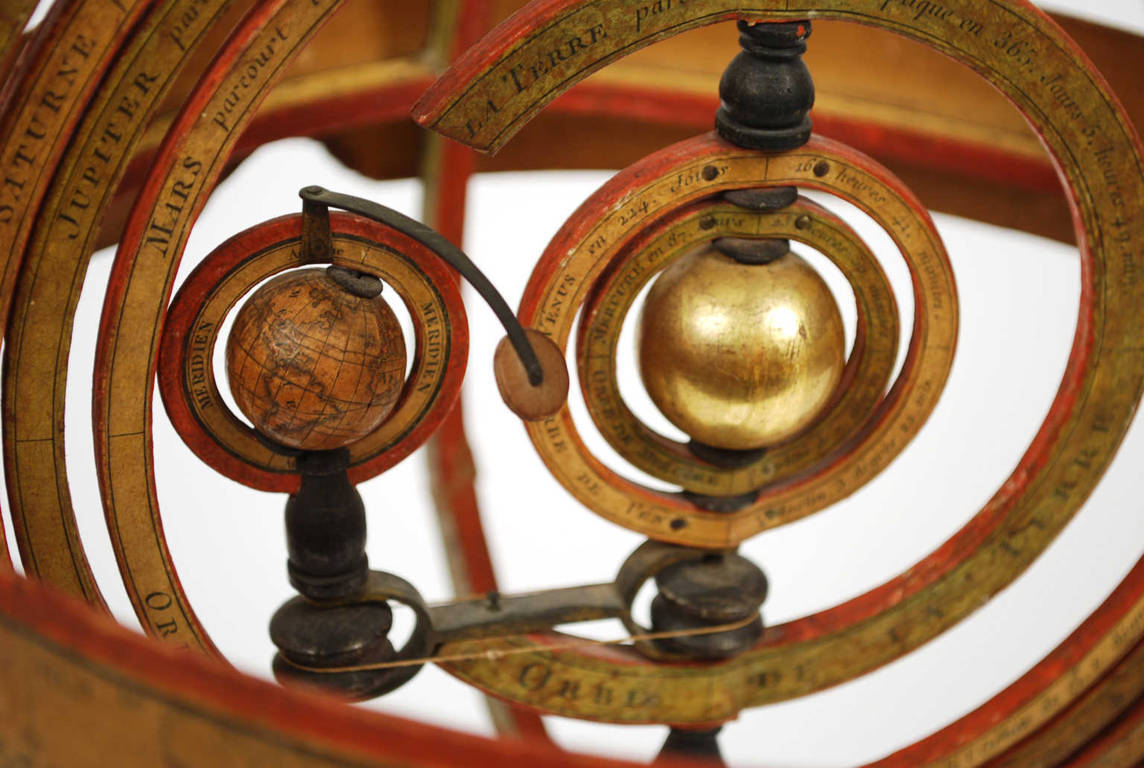antik.it/Nautical-antiques/7689-Ship-Log/
1698485371Code 7689 Ship LogBrass harpoon-shaped nautical odometer log or odometer, signed MASSEY'S Anchor Ship Log N. 1 E.M.P. This is the first model that entered production around the first half of the 19th century. The log is an ancient nautical instrument, very rare and with a characteristic shape, which measured the distance and speed of a ship. He was thrown overboard and dragged behind the ship itself; rotating thanks to its propeller, it transmitted the number of revolutions made on itself to the three quadrants made on an enamelled metal plate placed in the center of the log; the dials reported the measurements in miles from 0 to 100 in tens, from 0 to 10 in ones, from 0 to 1 in quarters. The data was then read every hour to also obtain the speed. In excellent condition, fully functional and mounted on a custom-made wooden and brass base. Measurements: length 49.5 cm, inches 19.5 - propeller width 14 cm, inches 5.5 - log body diameter 4.3 cm, inches 1.7.
In past centuries the attempt to measure the speed of ships was greatly hindered above all by the unavailability of instruments for measuring time with sufficient precision: throwing a piece of wood into the sea from the bow of a ship and measuring the time it took to reach at the stern, it was possible to obtain some information about the speed of the ship itself, but with many errors and inaccuracies. The principle of the mechanical log was illustrated to the Royal Society in 1699 by Robert Hooke, but the first model produced for commercial use was patented only in 1802 by Edward Massey (1768-1852), uncle of Thomas Walker who took over the business. In the past centuries the attempt to measure the speed of the ships was especially hindered by the lack of tools for the measurement of time of sufficient precision: throwing a piece of wood into the sea from the bow of a ship and measuring the time it took to get at the stern, it was possible to obtain some information on the speed of the ship, but with many errors and inaccuracies. The principle of mechanical patent log was shown to the Royal Society in 1699 by Robert Hooke, but the first model produced for commercial use was patented just in 1802 by Edward Massey, uncle of Thomas Walker, who succeeded him in business.
FAQ
Do you provide an authenticity certificate/expertise?
Of course! The legislative decree n. 42/2004 stipulates that who sells works of art or historical and archaeological items has the obligation to deliver to the purchaser the documents attesting to the authenticity of the object, or at least to submit the documents relating to the probable attribution and origin. Antik Arte & Scienza provides an expertise (as warranty) that contains a description, period and assignment or the author, if known, of the item.
How can I pay?
Secure payments by PayPal, credit card or bank transfer.
What are the shipping terms and the delivery schedule?
Shipping by DHL or UPS is free (but if we are shipping to a country non-EU remember that any taxes and customs duties are on your expense), and items will be sent just after receiving of payment.
Italy: delivering on the average in 24 h.
Europe: delivering on the average in 2/3 weekdays.
Other countries: delivering on the average in 5 weekdays; custom duties charged to the buyer.
Is shipping insured?
Of course! Free insurance by Lloyd's London that covers almost all destinations.
If I change my mind, can I return the item?
Of course! (see our general terms for more information).
e-Shop
Nautical antiques
Code 7689 Ship Log
Antik Arte & Scienza sas di Daniela Giorgi - via S. Giovanni sul Muro 10 20121 Milan (MI) Italy - +39 0286461448 - info@antik.it - www.antik.it - Monday-Saturday: 10am-7pm



























